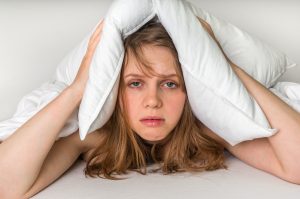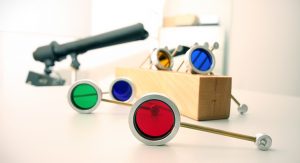If you are like me, the end of fall/beginning of winter marks the time when the skies get a little darker and the temps a little colder, and the desire to jump out of bed, change out of my comfortable athleisurewear and leave my warm home to do anything diminishes. However, the weather is not the only thing that seems to change and impact my motivation at this time of the year.
The overall experience of colder and longer darkened days can have quite an impact on our moods and behaviors as well, which many refer to as Seasonal Affective Disorder (SAD). So, it is no wonder that as we are going into the winter months with a pandemic that is still affecting the majority of our country and the rules to maintain social distance with family and friends continue that we may be hearing of many more people experiencing the symptoms associated with SAD.

When one thinks of seasonal affective disorder, we need to know and acknowledge that it is more than just the “winter blues.” Seasonal affective disorder (SAD) is a condition related to changes in seasons beginning and ending about the same time every year, fall/winter. It is known to drain a person of their energy and make them moodier. The symptoms can, at times, become distressing and overwhelming for the person to experience and ultimately interfere with how they are functioning in day-to-day life. Those experiencing SAD may start with the familiar feelings many of us here on the east coast experience in winter – that feeling of blah and not wanting to pack on layers of clothes just to go out and get the mail. But they can quickly increase to a loss of interest in activities and things that were enjoyed just days or weeks earlier, issues with concentration, fatigue, and even depression. It is no wonder then that this year it is already anticipated that we may see more individuals suffering from SAD and depressive states with the challenges of staying healthy, safe, and maneuver through the new and everchanging stay at home/quarantine rules. It is a known fact that it is more common for those who live further away from the equator, like us here on the northeast coast, to experience SAD symptoms since once we change the clocks, there are fewer daylight hours in the winter. And did you know that it is also more common for women than men to be diagnosed with this issue?!
So when you are looking for the feelings and emotions that you or others may be having during this time, there are some key signs and symptoms. They can include:
-
- Feeling sad or depressed
- Loss of interest in activities
- Changes in appetite, a craving for carbohydrates
- Weight gain or loss
- Changes and issues with sleep; insomnia, oversleeping, and sleeping too much
- Having a loss of energy and increased fatigue
- Feeling sluggish, tired
- Increase in purposeless physical activity; pacing, unable to sit still
- Mood swings, agitation, or anxiety
- Feeling hopeless, worthless or guilty
- Difficulty concentrating, thinking, or making decisions
- Having frequent thoughts of death or suicide

Don’t get me wrong; I am sure that many of you are reading this and saying to yourself, who hasn’t felt or experienced some of these things, especially in the winter months?! The key is that they need to start to affect your daily life a little more than just a day where you hibernate on the couch, spend more time in bed after the alarm goes off, or even stay up all night to watch movies on Netflix several days in a row. So what could cause such a significant shift in a person in such a short amount of time? While a specific cause of seasonal affective disorder remains unknown, some key factors may come into play. As mentioned above, the most significant factor is the effect that the number of daylight hours has on your body, brain, and biological clock or circadian rhythm. The reduction of the amount of sunlight in fall and winter can disrupt your body’s internal clock and lead to these feelings of depression. This reduction in ‘light’ is believed to influence mood and behavior changes more than even the weather-related variables such as temperature, rain or snow, and the available sunlight during the day.
The production of melatonin in our brain is another factor for the increase in these emotions. When it’s dark, your brain produces more of the hormone melatonin to help you sleep, while sunlight helps to trigger the brain to stop producing melatonin, making you feel awake and alert. During the long dark periods that we encounter during the winter, your body may be producing too much melatonin, leaving you feeling exhausted and low on energy.
Lastly, the production of serotonin in our brain can also affect these feelings. The reduced sunlight during the winter can lower your body’s serotonin production, a neurotransmitter that helps regulate mood. A decrease or lack of serotonin may lead to depression and adversely affect your sleep, appetite, memory, and even sexual desire.
So, with all the craziness of this past year, don’t just brush off those feelings you start to have as merely a case of the typical “winter blues.” The misguided thought that you can get through this on your own if you just push through the feelings and emotional dysregulation may not be the best plan you can take.
How to Combat SAD and the “Winter Blues”
One of the easiest and effective treatments recommended for seasonal affective disorder is light therapy, otherwise known as phototherapy or syntonics.

Light therapy looks to help replace the missing daylight of winter by exposing you to bright light that mimics natural outdoor light. Exposure to light can suppress the brain’s secretion of melatonin to help you feel more awake and alert, less tired, and melancholy. Light therapy is believed to jump-start the circadian rhythms back into the normal phase, like during the summertime when there are more daylight hours and time spent outdoors. When it works, it can make you feel so much better. It really is amazing! Your energy starts to come back; your mood improves, and your view of life improves too!
While in recent years, light therapy has been shown to improve the moods of individuals with SAD without the side effects that come with many other treatments, it can also help those just feeling the “winter blues.” The sessions in front of the light can improve your mood and motivation, help you think clearer, be less stressed, and less reactive towards others. When appropriately used, light therapy has been effective in up to 85 percent of SAD cases. So why should this not be an option for you too?!

However, it is key to figure out the amount of time of exposure needed. It can vary according to an individual’s symptoms, so it is essential to get guidance from a professional like your mental health professional to find the right amount and color frequency needed. They can also help you choose which light therapy will be effective and safe for you to use. And yes, while tanning beds generate sufficient light, they should never be used as a treatment for SAD since the UV rays they produce can be harmful to the skin and eyes. Light therapy can be a valuable addition to the therapeutic arsenal that you can use, and professionals can offer. However, light treatment must be continued regularly throughout the winter months to effectively treat seasonal affective disorder symptoms.
While I use Light Therapy myself and recommend many teens and adults to try this straightforward approach to help combat these emotions, let’s also look at some easy steps you can take at home and keep your mood and motivation steady this winter and throughout the year.
Some Self-Help Advice For SAD:
You may be able to prevent some of the symptoms of SAD and keep it from coming back if you just try and embrace some new habits and schedule some fun and relaxing things into your day.
# 1: Get Natural Sunlight
Whenever possible, go outside during the day! The more you can expose yourself to the sun without wearing sunglasses, the better. Allowing your eyes to get as much visible light as possible will help boost serotonin levels and improve your mood. Some ideas to get you started include:
-
-
- Taking a short walk outdoors – on colder days, have a cup of coffee or tea with you so you can stay warm
- Increase the natural light in your home/work – open blinds and drapes, sit near windows during the day
- Paint the walls in your home lighter colors that reflect more light
- Use less artificial lights or daylight simulation bulbs
-
# 2: Try to Exercise Regularly
I know this is something that you hear often, but regular exercise is a powerful way to fight seasonal depression, especially if you can exercise outside or in natural daylight. Regular exercise can help to boost serotonin, endorphins, and other feel-good chemicals in your brain. It can also help to improve your sleep and boost your self-esteem.
-
-
- Find exercises that allow your body to move continually, like walking, weight training, swimming, martial arts, or dancing.
- 30 to 60 minutes should be the goal; even something as simple as walking a dog can be a great way to get you outside.
-

# 3: Maintain Contact with Friends and Family
Staying in contact with close relationships can be key in reducing isolation and help you manage the symptoms of SAD. This may look different this year than others, but with technology, the excuses are lessened! Take part in socially distant activities, like zoom happy hours, even if you don’t feel like it. It may feel more comfortable to sit on the couch and binge-watch episodes of Schitt’s Creek, but connecting with other people will shift your mood. Even if you’ve withdrawn from relationships that were once important to you, make an effort to reconnect. And if you can do actual social activities, push yourself to go. Try and pick one from the suggestions below to do today!
-
-
- Call, text, email, and zoom old friends and set up zoom coffee dates or meet in person.
- Reach out to someone new – a colleague or a neighbor.
- Join a support group – sometimes, just talking about what you’re going through can help you feel better. Many groups are continuing to meet online until then can do so in-person. Connecting with others can help reduce your sense of isolation.
- Meet people with common interests by taking a class, joining a club, or enrolling in a particular interest group that meets regularly.
- Volunteer your time – helping others is one of the best ways to feel better about yourself.
-

# 4: Eat the Right Foods/Diet
Eating smaller, well-balanced meals throughout the day, especially with plenty of fresh fruit and vegetables, will help keep up your energy and minimize mood swings. One of SAD’s most challenging symptoms is that you may crave sugary foods and simple carbohydrates more, such as pasta and white bread. I swear that I can hear them calling to me in the food stores to purchase the extra bag of Doritos and M&M’s and then eat them entirely in one sitting! But complex carbohydrates are a better choice overall. Foods like oatmeal, whole grain bread, brown rice, and bananas can boost your feel-good serotonin levels without the subsequent sugar crash that the bag of M&M’s will have. Others rich in omega-3 fat, like fish, walnuts, soybeans, and flaxseeds, can also improve your mood.
# 5: Take Proactive Steps to Deal With Stress
No matter what time of year it is, too much stress can increase or even trigger depression. And 2020 has been quite a year for stress!!! Everywhere you turn, it is slapping us in the face. Distance schooling for the kids, working from home, extra precautions at the stores, toilet paper and cleaning supply shortages, the cancellation of extra-curricular activities, staying socially distant from loved ones, travel bans, you name it, STRESS is now attached to it. Instead of figuring out the things in your life that cause stress, try and make a plan to minimize their impact.
Practicing daily relaxation techniques helps you manage stress, reduce negative emotions such as anger and fear, and boost feelings of joy and well-being. There are many things that you can do at home, like yoga, meditation, or even mindfulness techniques that can help.
Another idea is doing something that you enjoy or even used to do more consistently. Try not to force yourself to have fun or experience pleasure because this can backfire but try to push yourself to do little things, even when you don’t feel like it. You may be surprised at just how much better you feel once you’re doing them. Having fun of any kind is a great stress buster as well, so try and make time for activities that bring you happiness, like playing an instrument, journaling, listening to an extra song in the car, or simply talking with family members or friends.

Whichever approach you take, either at home with some self-help tips or reaching out to a professional to see how light therapy can help, just know that others are experiencing these same symptoms and that there is always someone there to talk to and help!
At Sensory Stepping Stones, we are trained specialists in light therapy and syntonics and can help to assess and recommend the appropriate therapeutic approach for the signs and symptoms you are experiencing. We have several light therapies to offer at the clinic; Red Light/Infrared Light and syntonic phototherapy using various light filters like green, magenta, and violet. We are committed to helping you overcome and work through the stressors and challenges that the “winter blues” and seasonal affective disorder create in one’s life and can help determine the right approach for you!
Whatever the season, when you’re feeling depressed, your problems may not seem temporary or like they will be over after a specific time frame; they can even seem overwhelming and permanent. But you WILL feel better. If you feel suicidal, know that many people want to support you during this difficult time, so please reach out for help.
If you are feeling suicidal…
Call 1-800-273-TALK (1-800-273-8255) in the U.S. or visit the International Association for Suicide (https://www.iasp.info) to find a helpline in your country.
Want to know more about how we can help you get out of the “winter blues”? Sign up for your Free Consultation today!
Join our Facebook Group, and like/follow our Facebook Page or Instagram for more articles and tips!
Melissa Bianchini is a licensed clinical social worker in New York and the owner and executive director at Sensory Stepping Stones, LLC. Her career has spanned over 20 years working with children and families around neurological processing concerns, stress-related trauma, and anxiety. Her passion in life is to make a difference in the lives of kids and families that she works with. It has led her spirit to create a facility that facilitates a holistic approach to overall health, wellness, and processing development for those 3 through 93 years young! To unwind and reconnect, Melissa enjoys spending time at home with her husband, Damian, and her dogs and cats, exercising, eating chocolate (of course!), and doing anything that involves nature!

